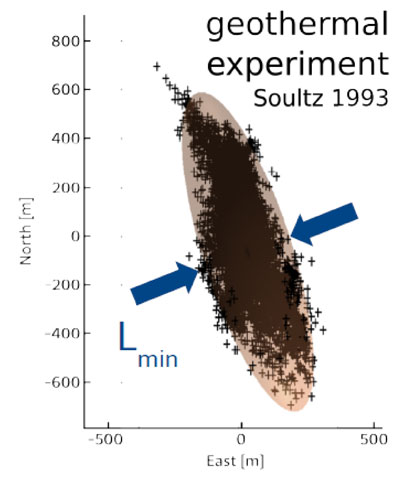Triggered versus Induced Earthquakes and Bounds of the Magnitude Probability
By:
Professor Serge A. Shapiro
Freie Universitaet Berlin - Germany
| When: | Thursday, January 16, 2014, 12:00 p.m. to 1:00 p.m. Join us for coffee beginning at 11:30 a.m. |
| Where: | Seminar Conference Room, 10100 Burnet Road, Bldg 196-ROC, Austin, Texas 78758 |
| Host: | Ian Dalziel, UTIG |
Click for a Live Broadcast.

Abstract
Fluid-induced seismicity results from an activation of finite rock volumes. The finiteness of perturbed volumes influences frequency-magnitude statistics. We observe that induced large-magnitude events at geothermal and hydrocarbon reservoirs are frequently underrepresented in comparison with the Gutenberg-Richter law. This is an indication that the events are more probable on rupture surfaces contained within the stimulated volume.
Here we theoretically and numerically analyze this effect. We consider different possible scenarios of event triggering: rupture surfaces located completely within or intersecting only the stimulated volume, and derive lower and upper bounds of the probability to induce a given-magnitude event. The bounds depend strongly on the minimum principal size of the stimulated volume. We compare the bounds with data on seismicity induced by fluid injections in boreholes.
Fitting the bounds to the frequency-magnitude distribution provides estimates of a largest expected induced magnitude and a characteristic stress drop, in addition to improved estimates of the Gutenberg-Richter a and b parameters. The observed frequency-magnitude curves seem to follow mainly the lower bound. However, in some case studies there are individual large-magnitude events clearly deviating from this statistic. We propose that such events can be interpreted as triggered ones, in contrast to the absolute majority of the induced events following the lower bound.




